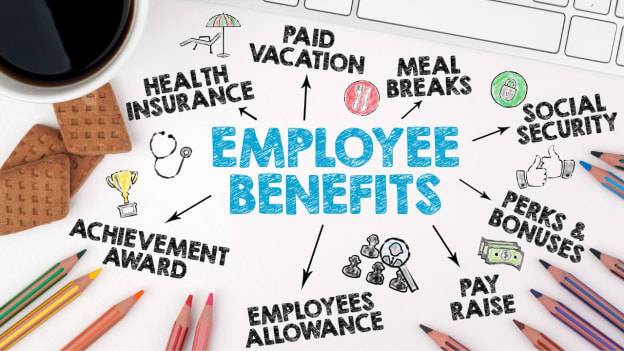These employer benefits boost employee satisfaction

Close to half (44 per cent) employees in Asia are experiencing stress in their daily lives with work pressures being cited as the top burnout factor by over half (55 per cent) of the respondents, followed by poor leadership (39 per cent) and job security (37 per cent), according to a new report by health and benefits consultancy Mercer Marsh Benefits.
Within the region, Hong Kong employees (55 per cent) felt the most stressed, while Indonesian employees (26 per cent) were least stressed.
The 2023 Health on Demand report, which surveyed over 17,500 employees in 16 markets across the globe, including more than 5,200 employees from Asia, highlights the need to address burnout by ensuring psychological safety in the workplace.
To address workplace stress, leading employers are adopting a comprehensive and inclusive benefits strategy. This includes measures such as reviewing job design and supervisor competencies, setting reasonable expectations, creating a culture of belonging and inclusive decision-making, and offering benefits like mental health treatment and training to tackle mental health challenges.
Improving employees’ mental health requires innovative benefits and solutions.
In Asia, targeted services for youth mental health (46 per cent), insurance or programmes to reduce the cost of mental health treatment (42 per cent), as well as virtual counselling with a therapist (42 per cent) can be helpful for employees and their families.
The report also highlights a positive correlation between offering more benefits and employee satisfaction. Employees who receive 10 or more benefits are more likely to believe their employer cares about their health and well-being, are thriving in their current role and less likely to leave the employer, and are more confident they can afford the healthcare their family needs.
However, only 64 per of employees in Asia feel that the benefits they receive meet their needs, highlighting the need for HR and risk managers to reassess the relevance and value of their benefits and find innovative ways to support their employees to thrive and perform at their best.
Closing health and risk protection gaps
The report has unveiled significant insights into the caregiving landscape in Asia. Around 76 per cent of employees in Asia fulfill caregiving responsibilities for their family or friends. Among the various caregiving benefits available, employees highly value work flexibility, leave and time-off, and subsidised caregiving benefits.
However, the report highlights a considerable protection gap among caregivers in the workforce. Specifically, 37 per cent of caregivers reported experiencing financial hardship due to medical expenses for them or their family, which is more than double the percentage compared to non-caregivers (15 per cent).
Furthermore, the findings reveal that a majority of employees who juggle the responsibilities of caring for both children and aging parents do not receive adequate caregiving benefits. Only 30 per cent and 33 per cent of such employees receive caregiving benefits for children and adults, respectively.
The report also sheds light on the challenges faced by low-income employees and part-time workers in Asia. Almost half of them (49 per cent) are not given access to medical coverage through their employers. Consequently, nearly one in three (31 per cent) employees with below-median income express a lack of confidence in their ability to afford essential healthcare.
Given the cost of living crisis and lack of national health care plans in some countries in Asia, it is necessary to educate early entrants to the workplace, also known as Gen Z workers, women, and young parents about financial planning to support their healthcare expenses.
Employees in Asia also place significant value on reproductive health benefits. According to the report, 48 per cent of employees in the region perceive preventive cancer screenings as beneficial for themselves or their families. However, only 29 per cent of employees have access to this crucial benefit.
Additionally, there is a notable lack of other reproductive health benefits, such as menopause support (21 per cent), contraception access (22 per cent), and fertility support (20 per cent).
According to Joan Collar, the Asia and Pacific Regional Leader at Mercer Marsh Benefits, the Health on Demand report has exposed significant disparities in the healthcare and protection needs of the workforce in Asia. These gaps are particularly pronounced among certain groups, including low-paid workers, caregivers, and women.
“Addressing healthcare inequality to reduce household out-of-pocket healthcare expenditure requires a multi-stakeholder approach in which employers play an important role. We urge employers to consider ‘Flipping the Benefits Pyramid’ – review the viability, applicability, accessibility of benefits across demograpics and income levels, and evaluate how best to develop a more inclusive health and benefits strategy to support the whole workforce,” she said.
Furthermore, the overall well-being and work performance of employees has been significantly impacted by ongoing macroeconomic, environmental, and political crises. The ‘pandemic’ continues to be the top concern for most employees in Asia, as opposed to the ‘economic downturn’, which is most worrying for global respondents.
“The findings remind us that health risks remain top of mind for employees in this region. While companies now focus on the recovery of their business in a post-pandemic world, it is equally important to invest in the People Risk aspects of their business, and not neglect the well-being of employees and their families. By offering comprehensive yet relevant benefits, employees will have the peace of mind to afford healthcare costs for themselves and their family, and still thrive at work and beyond,” Collar added.













